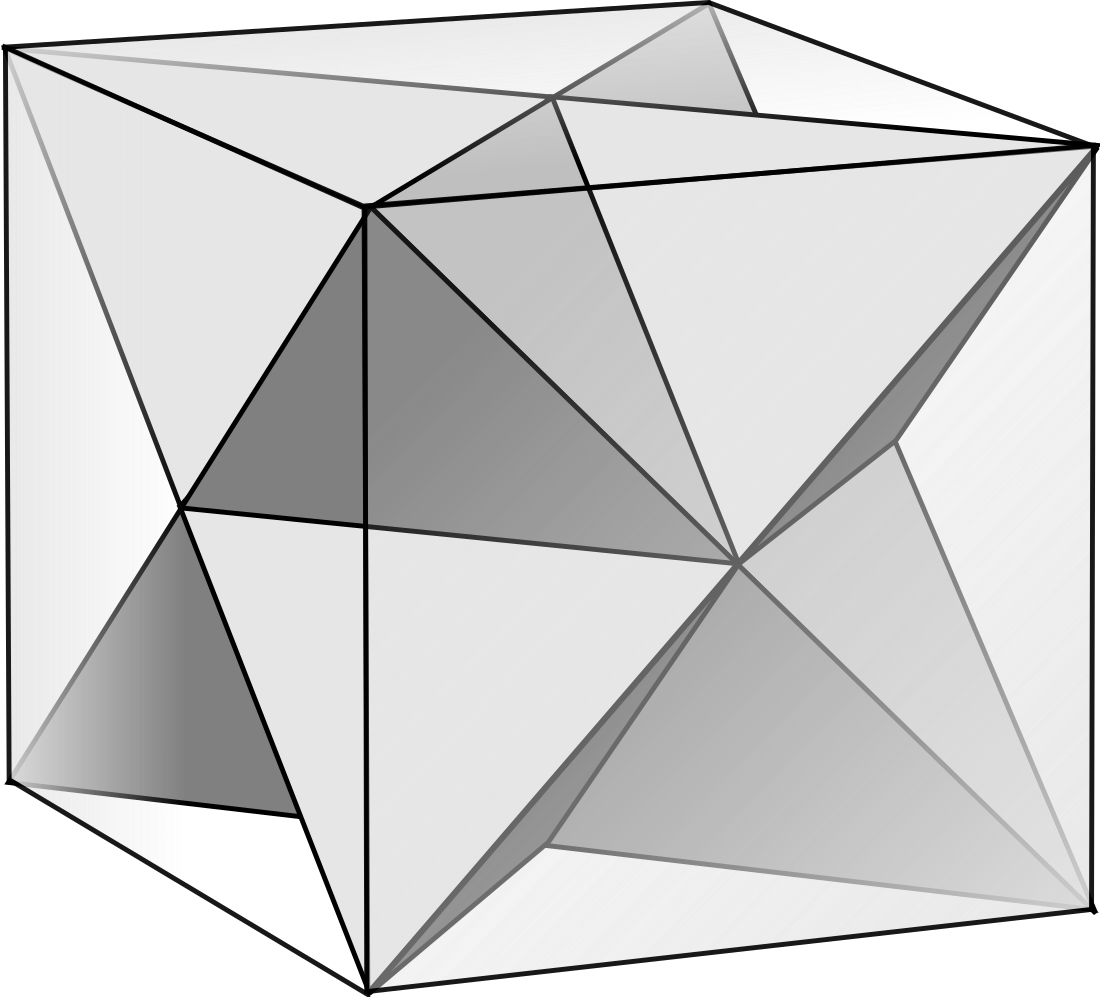Top Qs
Timeline
Chat
Perspective
Demihypercube
Polytope constructed from alternation of an hypercube From Wikipedia, the free encyclopedia
Remove ads
In geometry, demihypercubes (also called n-demicubes, n-hemicubes, and half measure polytopes) are a class of n-polytopes constructed from alternation of an n-hypercube, labeled as hγn for being half of the hypercube family, γn. Half of the vertices are deleted and new facets are formed. The 2n facets become 2n (n−1)-demicubes, and 2n (n−1)-simplex facets are formed in place of the deleted vertices.[1]

They have been named with a demi- prefix to each hypercube name: demicube, demitesseract, etc. The demicube is identical to the regular tetrahedron, and the demitesseract is identical to the regular 16-cell. The demipenteract is considered semiregular for having only regular facets. Higher forms do not have all regular facets but are all uniform polytopes.
The vertex-edge graph of the demihypercube is the halved cube graph.
An n-demicube has inversion symmetry if n is even.
Remove ads
Discovery
Thorold Gosset described the demipenteract in his 1900 publication listing all of the regular and semiregular figures in n-dimensions above three. He called it a 5-ic semi-regular. It also exists within the semiregular k21 polytope family.
The demihypercubes can be represented by extended Schläfli symbols of the form h{4,3,...,3} as half the vertices of {4,3,...,3}. The vertex figures of demihypercubes are rectified n-simplexes.
Remove ads
Constructions
Summarize
Perspective
They are represented by Coxeter-Dynkin diagrams of three constructive forms:




 ...
... (As an alternated orthotope) s{21,1,...,1}
(As an alternated orthotope) s{21,1,...,1}


 ...
...
 (As an alternated hypercube) h{4,3n−1}
(As an alternated hypercube) h{4,3n−1}


 ...
...
 . (As a demihypercube) {31,n−3,1}
. (As a demihypercube) {31,n−3,1}
H.S.M. Coxeter also labeled the third bifurcating diagrams as 1k1 representing the lengths of the three branches and led by the ringed branch.
An n-demicube, n greater than 2, has n(n−1)/2 edges meeting at each vertex. The graphs below show less edges at each vertex due to overlapping edges in the symmetry projection.
In general, a demicube's elements can be determined from the original n-cube: (with Cn,m = mth-face count in n-cube = 2n−m n!/(m!(n−m)!))
- Vertices: Dn,0 = 1/2 Cn,0 = 2n−1 (Half the n-cube vertices remain)
- Edges: Dn,1 = Cn,2 = 1/2 n(n−1) 2n−2 (All original edges lost, each square faces create a new edge)
- Faces: Dn,2 = 4 * Cn,3 = 2/3 n(n−1)(n−2) 2n−3 (All original faces lost, each cube creates 4 new triangular faces)
- Cells: Dn,3 = Cn,3 + 23 Cn,4 (tetrahedra from original cells plus new ones)
- Hypercells: Dn,4 = Cn,4 + 24 Cn,5 (16-cells and 5-cells respectively)
- ...
- [For m = 3,...,n−1]: Dn,m = Cn,m + 2m Cn,m+1 (m-demicubes and m-simplexes respectively)
- ...
- Facets: Dn,n−1 = 2n + 2n−1 ((n−1)-demicubes and (n−1)-simplices respectively)
Remove ads
Symmetry group
The stabilizer of the demihypercube in the hyperoctahedral group (the Coxeter group [4,3n−1]) has index 2. It is the Coxeter group [3n−3,1,1] of order , and is generated by permutations of the coordinate axes and reflections along pairs of coordinate axes.[2]
Orthotopic constructions

Constructions as alternated orthotopes have the same topology, but can be stretched with different lengths in n-axes of symmetry.
The rhombic disphenoid is the three-dimensional example as alternated cuboid. It has three sets of edge lengths, and scalene triangle faces.
See also
References
External links
Wikiwand - on
Seamless Wikipedia browsing. On steroids.
Remove ads




















